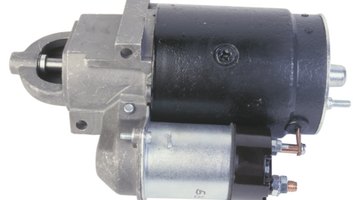How to Wire the Ignition Switch on a Tractor
The purpose of an ignition switch is to prevent the electrical system from draining the battery when the tractor is not running. In addition, the ignition switch mechanically controls the amount of voltage sent to the coil of the starter by switching between two circuits.

Things You Will Need
- Soldering iron
- Silver core solder
- Vinyl insulation spray
When the tractor is cranked, the starter requires the full capacity of the battery's voltage. However, once the tractor is running, too much voltage can damage the coil of the starter, so the voltage is rerouted through the switch to a second circuit, through a voltage resister, then to the coil.
-
Pull the negative battery cable off the negative battery terminal by unscrewing the nut on the cable clamp. Do the same to the positive cable.
-
Solder the wire running from the positive terminal of the starter to the tab marked "S" on the back of the ignition switch.
-
Solder the wire running from the positive side of the voltage regulator to the tab marked "R." The other wire attached to the regulator is attached to the starter.
-
Solder the positive wire running from the battery to the tab marked "B." Spray the soldered tabs with the vinyl insulation. Allow the insulation to cure overnight before starting the machine.
References
Photo Credits
- Hemera Technologies/PhotoObjects.net/Getty Images
- Hemera Technologies/PhotoObjects.net/Getty Images
More Articles



